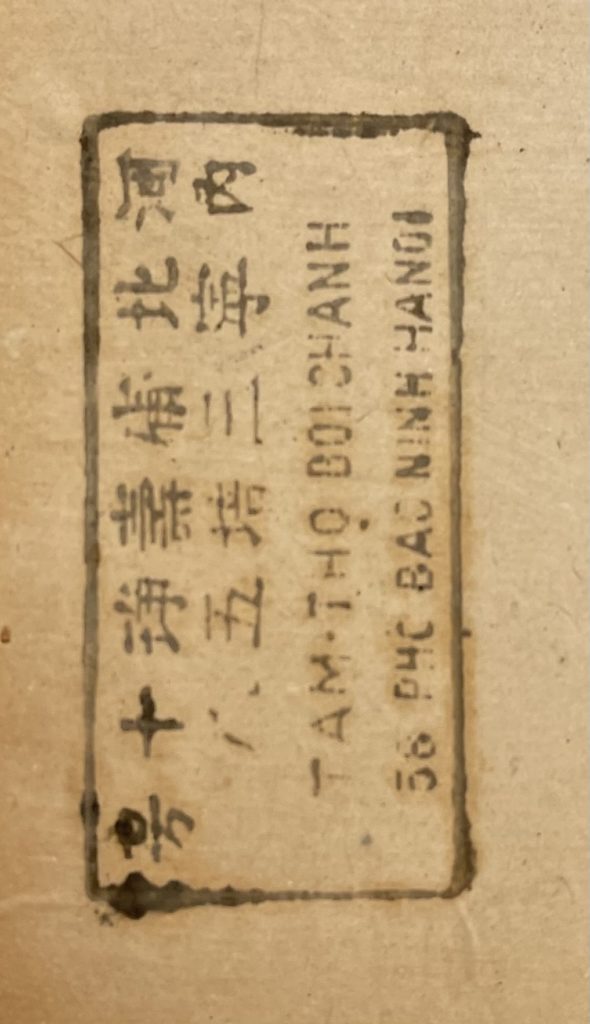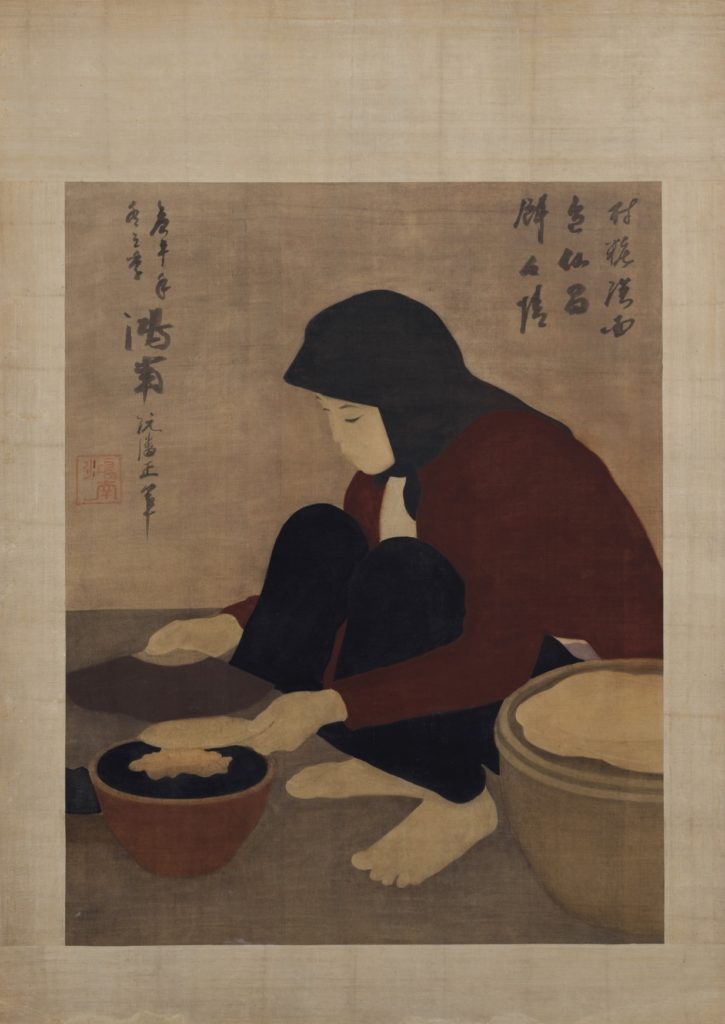Nguyen Phan Chanh, 1930-31, « La Pâtisserie » or the Gods are in love
“La Pâtisserie” is one of a small group of sublime and very rare works executed by the painter between 1929 and 1932.
The Chinese calligraphy seen in the upper left corner dates the work with the mention “Year of the Horse, Winter”. That is, between January 30, 1930 and February 16, 1931. Winter begins in Hanoi (where the painting was executed) around November, which sets our painting probably between November and December 1930 and January or ever February 16th, 1931. The painter’s stamp “Hong Nan”, the inscription “Hong Nan” and the painter’s signature occupy the top left of the work while the top right gratifies us with a short poem. On the back, a stamp in diluted black ink, whose inscriptions in Chinese and Quoc-Ngû give the framer’s name or nickname and address: “Tam-Tho Boi Chanh, 56 street Bac Ninh, Hanoi”.

In 1931, Captain Jacques Leboiteux traveled in Indochina as an aide-de-camp for the French Minister for Colonies, Paul Reynaud. He acquired the work then and it remained in his family to this day.

Like in most of the painter’s early works, “La Pâtisserie” combines different flat tones of gouache and ink on silk. Cameos of brown and light brown next to each other offer a painting of exceptional quality. The space organised in a succession of triangles (the two legs of the pants and the headdress in black ink, both the feet and the face in a cream colour, the angle formed by the feet, the fan itself) and rounded shapes (the container filled with embers, the pancake, the container, on the right where the cooked pancakes pile up. Note the stylisation of the objects: the jars-vessels are not realistic, neither is not the fire under the pancake, nor the charcoal.
Nguyen Phan Chanh is the painter of simplicity, a kind of simplicity that flows with elegance, as we can sense a nobility in the young woman’s face and pose. As always, the painter depicted a simple task, the making of a rice pancake, and brought out a nobility in all its gestures.
She is waving the fan to set up the fire in the brazier below, giving the rice pancake all its importance in the composition of the painting.
It is reinforced by the strong calligraphy set in the upper right of the painting:
« The grain is a light yellow colour
Even the gods are in love with the pastry ».
Nguyen Phan Chanh shows the grain of rice being transformed by the humble young woman into a crepe, the object of the Gods’ love.
Simplicity of pleasure and pleasure of simplicity. But a divine simplicity: the spirit of Nguyen Phan Chanh.
Let us also note the discreet creamy and bluish touch which, modestly, reveals a small part of the young woman’s skin on her side as she is in a squatting position. The painter acts in the same way with ”La Vendeuse de Bétel” (1931) from the Tholance-Lorenzi collection. In 1933 he will deliver a much more colourful work “La Jeune Fille au Perroquet” from a French collection. As for the previous works, “L’Enfant à l’Oiseau” from the Morax collection is the only one we know.
In these works Nguyen Phan Chanh offers single characters. Also in a group as in ”La Marchande de Riz” from a British collection, ”Le Jeu des Cases Gagnantes” from the collection Tuan Pham, or ”La Marchande de Oc‘” from a British collection, ”Les Teinturières” from a French collection or ”Les Couturières” from the Jean-Marc Lefèvre collection/
Yes, the Gods are in love and as Nguyen Phan Chanh, there are true epicureans of simplicity.
Jean-François Hubert